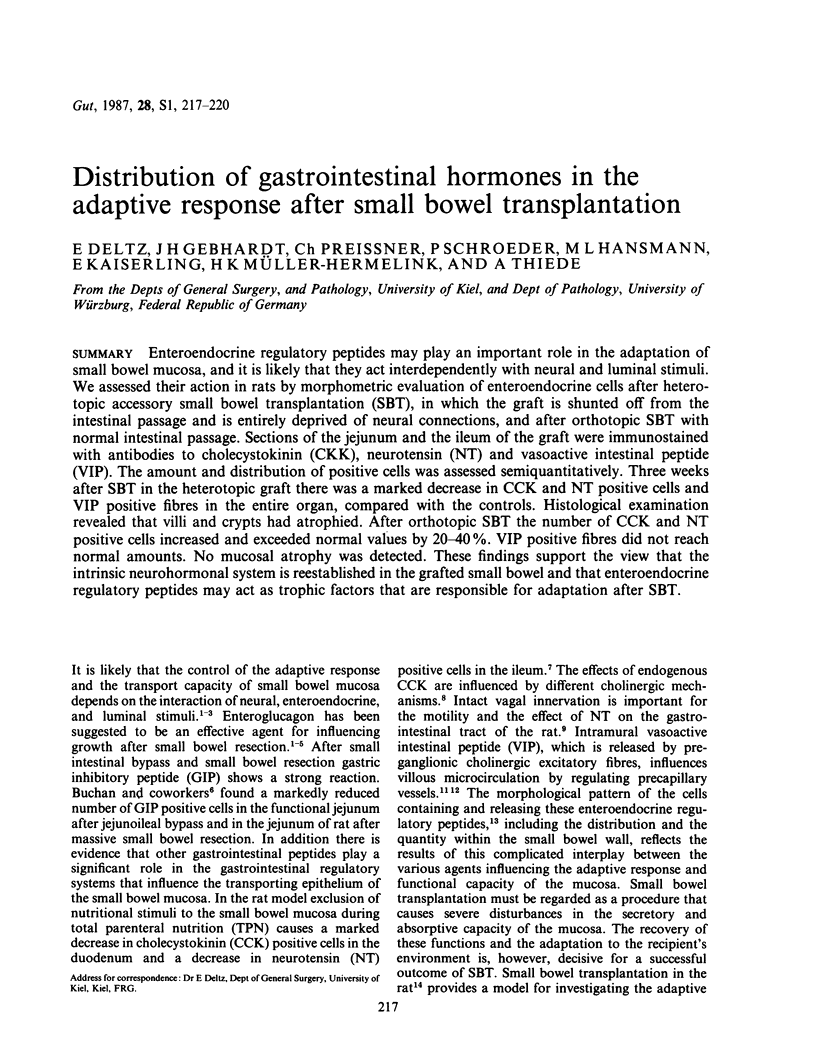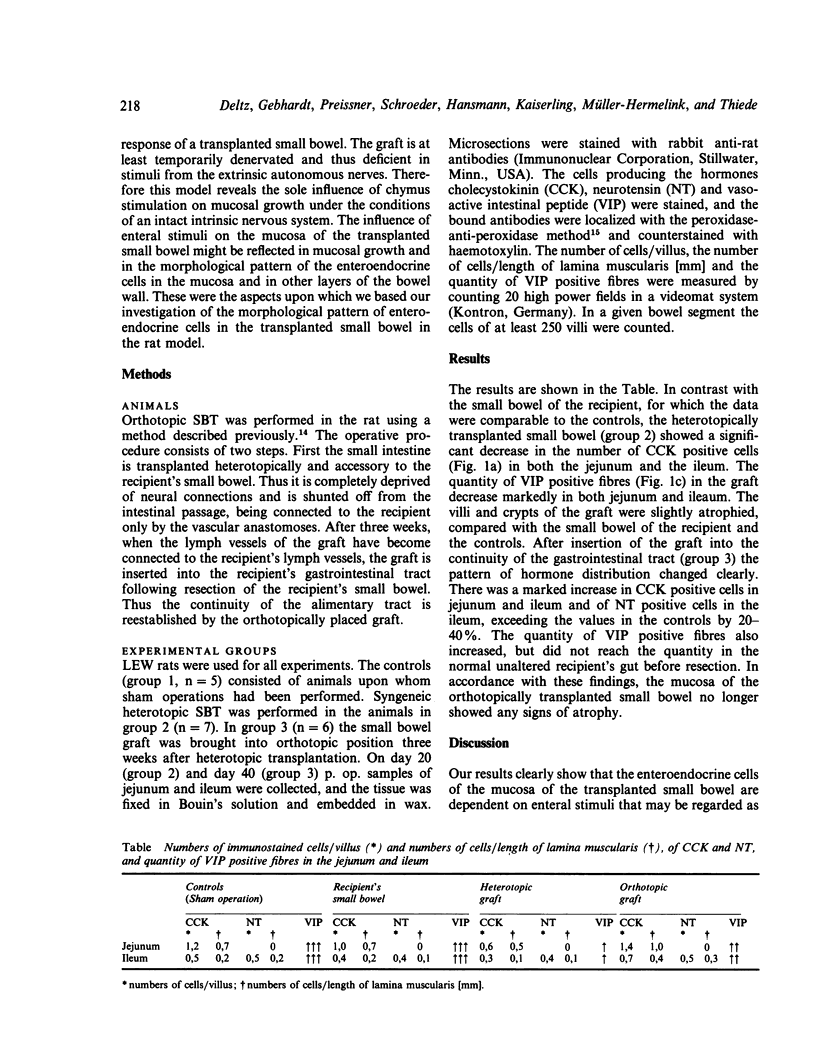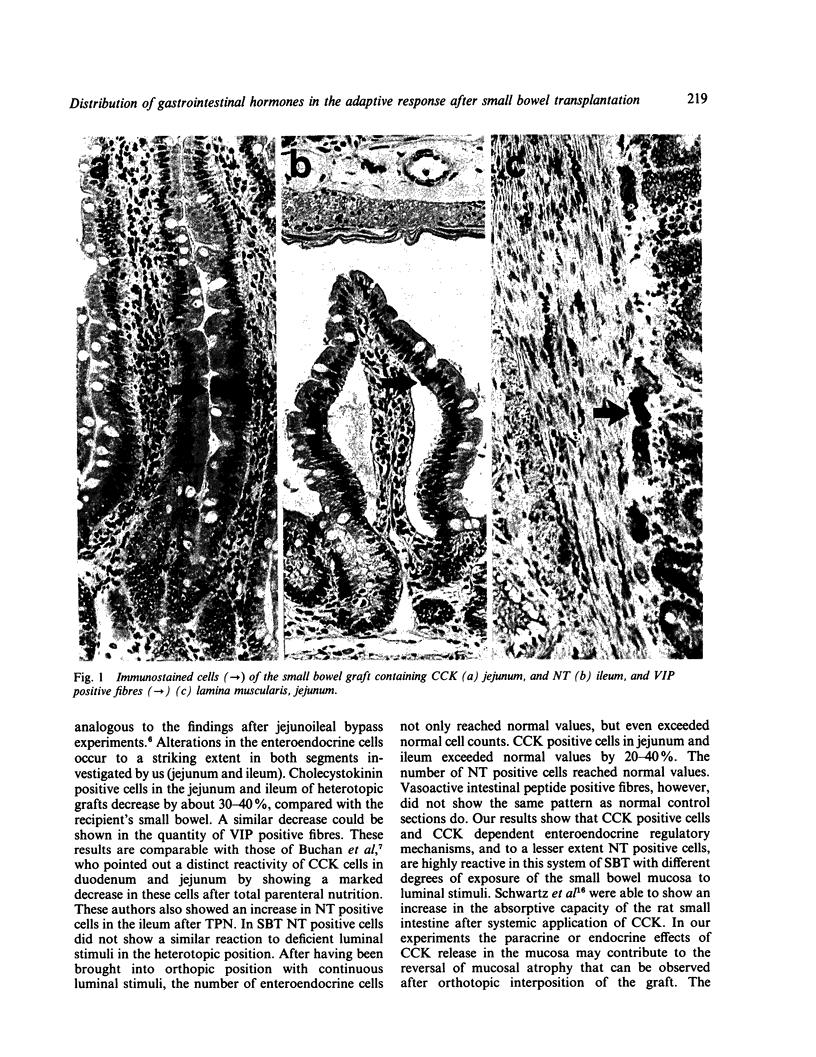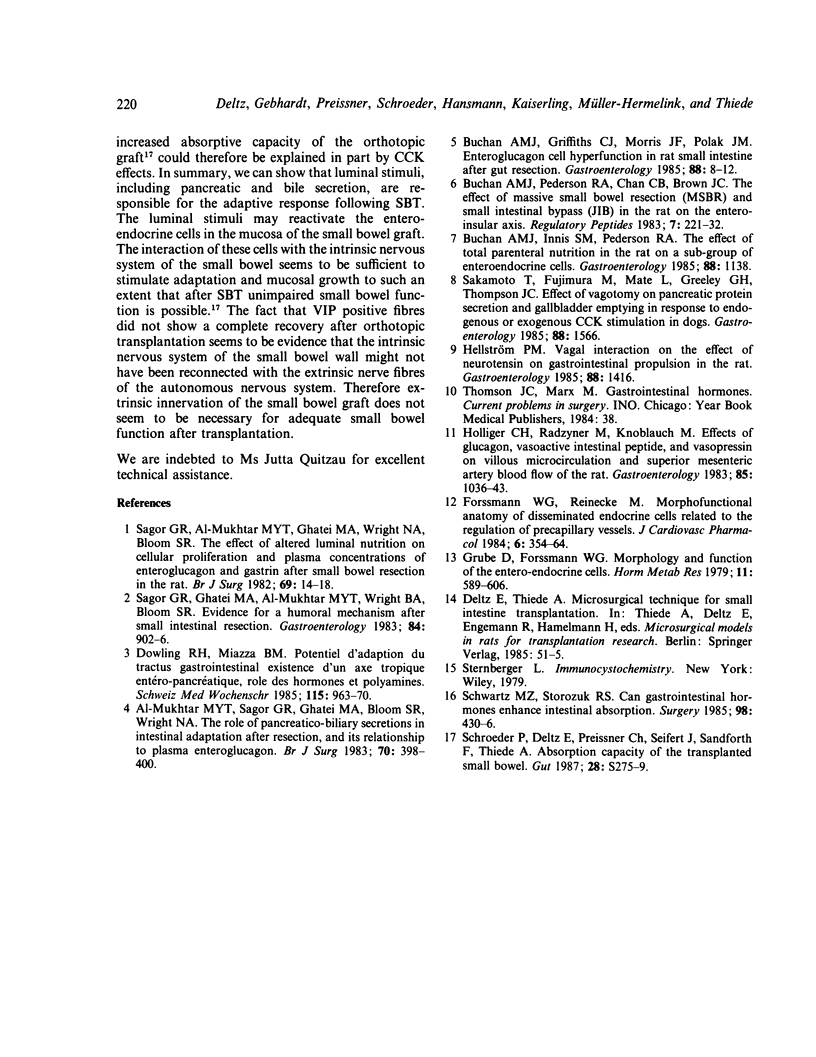Abstract
Enteroendocrine regulatory peptides may play an important role in the adaptation of small bowel mucosa, and it is likely that they act interdependently with neural and luminal stimuli. We assessed their action in rats by morphometric evaluation of enteroendocrine cells after heterotopic accessory small bowel transplantation (SBT), in which the graft is shunted off from the intestinal passage and is entirely deprived of neural connections, and after orthotopic SBT with normal intestinal passage. Sections of the jejunum and the ileum of the graft were immunostained with antibodies to cholecystokinin (CKK), neurotensin (NT) and vasoactive intestinal peptide (VIP). The amount and distribution of positive cells was assessed semiquantitatively. Three weeks after SBT in the heterotopic graft there was a marked decrease in CCK and NT positive cells and VIP positive fibres in the entire organ, compared with the controls. Histological examination revealed that villi and crypts had atrophied. After orthotopic SBT the number of CCK and NT positive cells increased and exceeded normal values by 20-40%. VIP positive fibres did not reach normal amounts. No mucosal atrophy was detected. These findings support the view that the intrinsic neurohormonal system is reestablished in the grafted small bowel and that enteroendocrine regulatory peptides may act as trophic factors that are responsible for adaptation after SBT.
Full text
PDF



Images in this article
Selected References
These references are in PubMed. This may not be the complete list of references from this article.
- Al-Mukhtar M. Y., Sagor G. R., Ghatei M. A., Bloom S. R., Wright N. A. The role of pancreatico-biliary secretions in intestinal adaptation after resection, and its relationship to plasma enteroglucagon. Br J Surg. 1983 Jul;70(7):398–400. doi: 10.1002/bjs.1800700703. [DOI] [PubMed] [Google Scholar]
- Buchan A. M., Griffiths C. J., Morris J. F., Polak J. M. Enteroglucagon cell hyperfunction in rat small intestine after gut resection. Gastroenterology. 1985 Jan;88(1 Pt 1):8–12. doi: 10.1016/s0016-5085(85)80125-6. [DOI] [PubMed] [Google Scholar]
- Buchan A. M., Pederson R. A., Chan C. B., Brown J. C. The effect of massive small bowel resection (MSBR) and small intestinal bypass (JIB) in the rat on the enteroinsular axis. Regul Pept. 1983 Nov;7(3):221–232. doi: 10.1016/0167-0115(83)90015-0. [DOI] [PubMed] [Google Scholar]
- Dowling R. H., Miazza B. M. Potentiel d'adaptation du tractus gastro-intestinal. Existence d'un axe trophique entéro-pancréatique, rôle des hormones et polyamines. Schweiz Med Wochenschr. 1985 Jul 20;115(29):963–970. [PubMed] [Google Scholar]
- Grube D., Forssmann W. G. Morphology and function of the entero-endocrine cells. Horm Metab Res. 1979 Nov;11(11):589–606. doi: 10.1055/s-0028-1092785. [DOI] [PubMed] [Google Scholar]
- Holliger C., Radzyner M., Knoblauch M. Effects of glucagon, vasoactive intestinal peptide, and vasopressin on villous microcirculation and superior mesenteric artery blood flow of the rat. Gastroenterology. 1983 Nov;85(5):1036–1043. [PubMed] [Google Scholar]
- Sagor G. R., Al-Mukhtar M. Y., Ghatei M. A., Wright N. A., Bloom S. R. The effect of altered luminal nutrition on cellular proliferation and plasma concentrations of enteroglucagon and gastrin after small bowel resection in the rat. Br J Surg. 1982 Jan;69(1):14–18. doi: 10.1002/bjs.1800690106. [DOI] [PubMed] [Google Scholar]
- Sagor G. R., Ghatei M. A., Al-Mukhtar M. Y., Wright N. A., Bloom S. R. Evidence for a humoral mechanism after small intestinal resection. Exclusion of gastrin but not enteroglucagon. Gastroenterology. 1983 May;84(5 Pt 1):902–906. [PubMed] [Google Scholar]
- Schwartz M. Z., Storozuk R. B. Can gastrointestinal hormones enhance intestinal absorption? Surgery. 1985 Sep;98(3):430–436. [PubMed] [Google Scholar]



